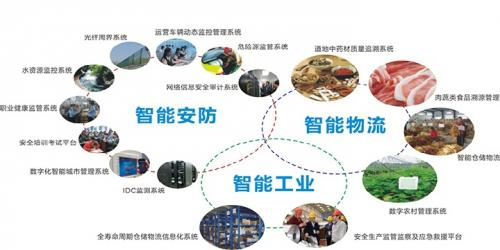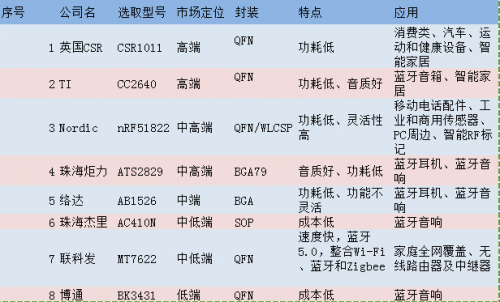|
The OP
Published on 2019-8-23 15:31
Only look at the author
This post is from RF/Wirelessly
| ||
|
|
||
|
alan000345
Currently offline
|
2
Published on 2019-8-26 10:18
Only look at the author
|
|
|
|
|
|
|
3
Published on 2019-8-30 09:07
Only look at the author
| |
|
Personal signature向战斗型转化
|
|
|
|
|
4
Published on 2019-9-3 11:38
Only look at the author
This post is from RF/Wirelessly
| ||
|
Personal signature网络通信模块/WiFi模块/无线通信模块QQ:42142951
|
||
|
|
|
5
Published on 2019-9-3 17:15
Only look at the author
This post is from RF/Wirelessly
| ||
|
|
||
|
|
|
6
Published on 2019-9-3 17:53
Only look at the author
| |
|
|
|
|
|
- 【Posts】Inventory of mainstream Bluetooth chips, which one is better, Nordic/TI/Broadcom?
- 【Posts】TI blog post: Advantages of low-power GaN in common AC/DC power topologies
- 【Posts】TI blog post: Solving the three major power supply design challenges of corner radar systems
- 【Posts】In this TI topology, how can Q1 be always on? Doesn't the driver input of UCC27211ADRMR need to be PWM?
- 【Posts】I took a look at TI's official M0 chip product pictures and found that there are products with Flash ranging from 8KB to 64KB. What applications are they all aimed at?
- 【Posts】The price has increased by at least 200 times! Identification of popular chip material numbers from TI, ST, Infineon, and Qualcomm
- 【Posts】TI's TPS61200 boost chip can only boost voltage but not reduce voltage during actual testing. Please help.
- 【Posts】The applications of TI audio chips used in smart speakers are revealed.
- 【Design】Super mini EV2400 Ti lithium battery chip debugger
- 【Design】Power module based on TI's DC-DC chip LM2678ADJ
- 【Circuits】TI TCAN4550 system basic chip analysis
- 【Articles】TI ranks first among the top 20 global industrial chip manufacturers
-
Nordic CEO reviews innovations in the Bluetooth and cellular markets in 2021
NordicSemiconductorCEOSvenn-ToreLarsenrecentlyspoketoEETasiaabouthowthecompanyrespondedtothechallengesofthepastyearSvenn-ToreLarsen,CEO,NordicSemiconductorWhatchallengesdidNordicfacein2021?TheglobalimpactoftheCOVID-19pandemiconsocietyandthe ...
-
Bluetooth is down: BIAS attacks threaten all mainstream Bluetooth chips
DuetothedefectsoftheBluetoothsecurityprotocolitself,mainstreamBluetoothchipsfromcompaniesincludingApple,Intel,Samsung,Qualcomm,CSR,etcResearchersattheSwissFederalInstituteofTechnologyinLausanne(EPFL)havediscoveredasecurityvulnerabilityinBlu ...
-
[V2S200D Voice Vibration Sensor Evaluation Kit Review] Review Summary
ThistimeIappliedtoparticipateintheevaluationof[V2S200DVoiceVibrationSensorEvaluationKit(KAS-33100-0007)]andwasfortunatelyselected:Evaluationshortlist:V2S200DVoiceVibrationSensorEvaluationKit(KAS-33100-0007).Afterreceivingtheevaluationkit,we ...
- [V2S200D Voice Vibration Sensor Evaluation Kit Review] Audacity Tool Test
- 【Follow me Season 2 Episode 4】IMU sensor six-axis data printing
- PWM output of MSP430 library timer TA
- About the temperature acquisition of TMP006 temperature sensor
- Help 40E Gold
- Impedance Matching Equation Using Wheeler's Methodology
- Hou Ziqiang talks about 3G development
EEWorld Datasheet Technical Support
-
"Cross-chip" quantum entanglement helps build more powerful quantum computing capabilities
IBM scientists have achieved "cross-chip" quantum entanglement - successfully entangled two "Eagl
-
Ultrasound patch can continuously and noninvasively monitor blood pressure
A research team at the University of California, San Diego, has developed an innovative wearable
-
Europe's three largest chip giants re-examine their supply chains
At the Electronica 2024 CEO Roundtable held just last week, the CEOs of three chip giants, Infine
- It is reported that Kioxia will be approved for listing as early as tomorrow, and its market value is expected to reach 750 billion yen
- The US government finalizes a $1.5 billion CHIPS Act subsidy to GlobalFoundries to support the latter's expansion of production capacity in the US
- SK Hynix announces mass production of the world's highest 321-layer 1Tb TLC 4D NAND flash memory, plans to ship it in the first half of 2025
- UWB is a new way to use it in cars. Can wireless BMS also use it?
- Filling the domestic gap! China Mobile, Huawei and others jointly released the first GSE DPU chip
- Samsung Electronics NRD-K Semiconductor R&D Complex to import ASML High NA EUV lithography equipment
- Apple reveals the secret of its own chip success: competitors can't use the latest cutting-edge technology
- Problems with STM32 and passive buzzer playing sound
- Embedded Tutorial_DSP Technology_DSP Experiment Box Operation Tutorial: 2-28 Building a Lightweight WEB Server Experiment
- OPA847IDBVR op amp domestic replacement
- AG32VF407 Test UART
- [Digi-Key Follow Me Issue 2] Chapter 1: Sharing on receiving the goods
- What model is this infrared receiver? Which model can be used instead? Thank you
- Selling brand new unopened ZYNQ 7Z020 FPGA core board
- The LORA module used in the lithium battery-powered water meter setting can save energy when 100 water meters are installed in one corridor.
- I would like to ask, when a port is set to RX0, is it necessary to set the input and output direction of this port?
- Why is this year so difficult? It’s even more difficult than during the pandemic. I’m 30 and facing unemployment. I’m so confused.
- Ask about the voltage regulator test question
- [Xiaohua HC32F448 Review] About Xiaohua Semiconductor's UART interrupt sending and PRINTF construction and redirection
- 【BIGTREETECH PI development board】 HDMI output test
- 【BIGTREETECH PI development board】+08. Audio test (zmj)
- [Xiaohua HC32F448 Review] +RTC electronic clock





 提升卡
提升卡 变色卡
变色卡 千斤顶
千斤顶
